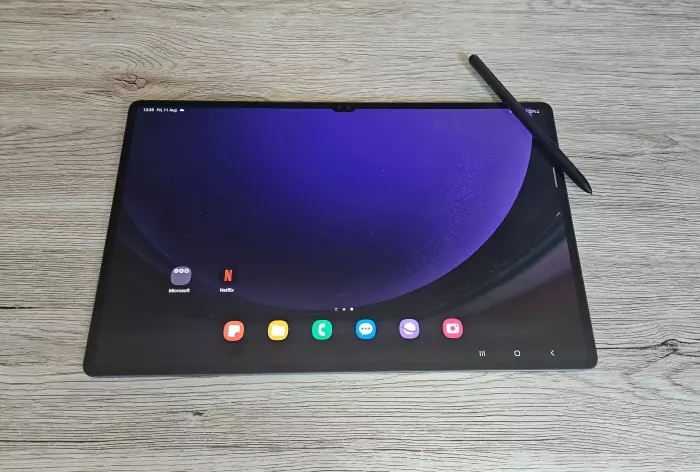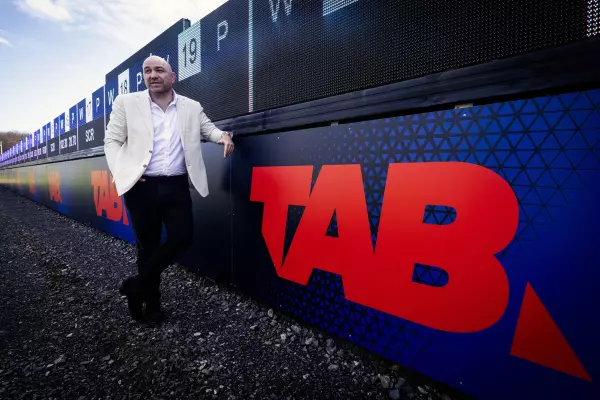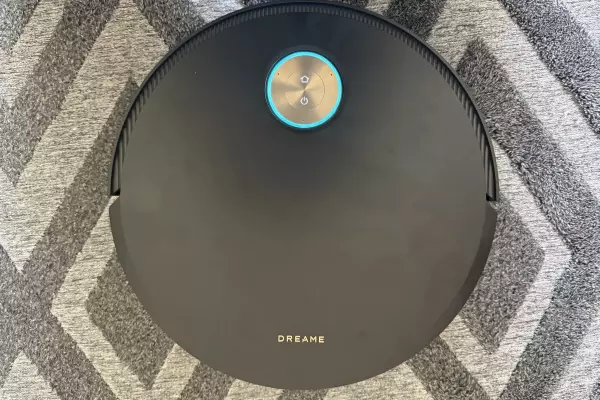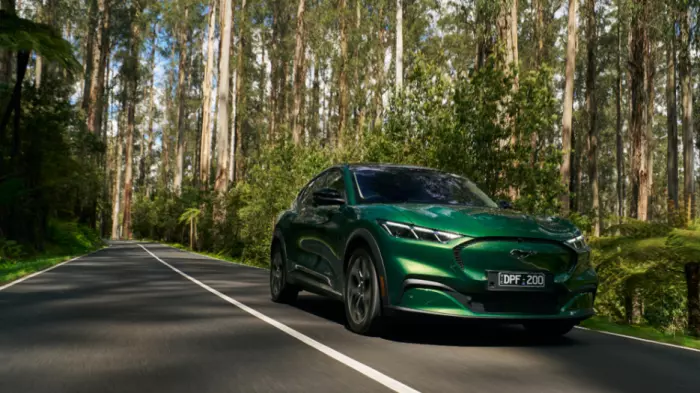Tablets are unusual devices, a perfect middle ground between the desk-demanding laptop and the ultra-portable smartphone.
For the most part, tablets are used for the lightest entertainment – unwinding with some TV in bed, playing some simple games, or even reading.
The Samsung Galaxy Tab Ultra series is not that kind of tablet.
You won’t see nana picking it up to do a virtual jigsaw puzzle, and only a lunatic would make it their e-reader.
That’s because it's massive, with a 14.6in screen, and expensive, costing between $2,200 and $3,000 depending on capacity and whether you want a 5G cellular version.
Last year, I called the Tab S8 Ultra a beast, and this year’s S9 is no different, and in many ways is almost the same – but maybe I’ve changed.
While the S8 left me more confused than anything, this year I suddenly see the beauty with the S9.
Specs and upgrades
There isn’t much difference between the S8 and the S9.
The screen is slightly better thanks to the shift from Super AMOLED to Dynamic AMOLED 2x, improving contrast, brightness and colour definition.
The device is IP68 rated for dust and water resistance, meaning it can get a bit splashed or be very briefly submerged – a great addition for boaties.
Like the S8 Ultra, the S9 Ultra is the tippity top of the line for a tablet computer, but the upgrades are incremental and things like the battery life and camera are more or less the same (except for a very small megapixel upgrade to the ultrawide camera).
Who is the S9 Ultra for?
As mentioned above, this model is not for your average tablet users.
In fact, if you are in the market for a typical tablet then forget about this device; close this tab and go and read my recent iPad Air review (or stay tuned for my Oppo Pad review in the coming weeks).
Even calling this thing a tablet is kind of a misnomer and probably why I couldn’t get my head around it last time.
No, this should be called a portable media powerhouse.
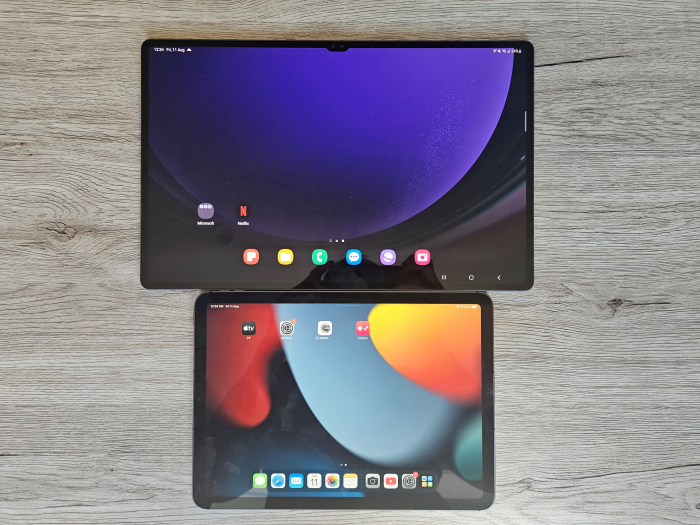 Comparing the S9 Ultra to the 10.9in iPad Air, both at max brightness, shows the sheer size and quality of the Samsung screen. (Image: BusinessDesk)
Comparing the S9 Ultra to the 10.9in iPad Air, both at max brightness, shows the sheer size and quality of the Samsung screen. (Image: BusinessDesk)
I mentioned boaties above and I think this device would be ideal as a main media player on a small boat.
It might be too big for people who travel constantly, but those who live away from home for long stretches – for example, mining or oil rig workers – would find a lot of value in having this on hand in their temporary lodging.
But there is one area that I think the device will excel beyond any other. That area is simultaneously niche and the most popular form of entertainment in the world. I’m talking about:
Gaming
Now I know that at the mere mention of video games, about half of you have tuned out and the other half have clutched your pearls at the suggestion that an Android tablet could EVER be a gaming rig.
But let me explain:
Portable cloud gaming
As we well know, the film and TV industry was completely reimagined by streaming services.
Untethered from scheduled programming and specific hardware, the world of on-demand has made consumption of video and audio content eminently flexible, and slowly but surely gaming is set to follow.
The Nintendo Switch spearheaded the resurgence of portable gaming, bringing pretty good quality to a space previously dominated by low-spec devices.
Valve’s Steam Deck and Asus’s ROG Ally devices are also major contenders in the world of nouveau gaming.
At a wimpy 7in screen size, those three are all great for commuting.
But let’s say you want to bring with you an incredibly thin 14.6in computer that you could connect to any old wireless controller you have in your bag.
(When I connected it to my PS4 controller, I could even control a mouse cursor with the touchpad.)
And let’s say you pay the $22 a month for Xbox’s cloud gaming services that lets you stream a range of games from anywhere.
With the ultra-fast connectivity of wifi 6 (or even 5G one day), you now have one of the best portable gaming set-ups out there.
At least, maybe one day
I’ll be honest: even though the S9 Ultra is capable, it’s still expensive, and I don’t think the supporting tech is quite ready for this yet. Cloud gaming is still in its infancy and many games are still tied to hardware (particularly Nintendo) and I sometimes got phantom inputs with the controller.
But many of us remember the days of packing up a whole PC or console and TV into the car and taking it to a mate’s house for a good old-fashioned LAN party, and I can imagine something like the S9 Ultra taking its place.
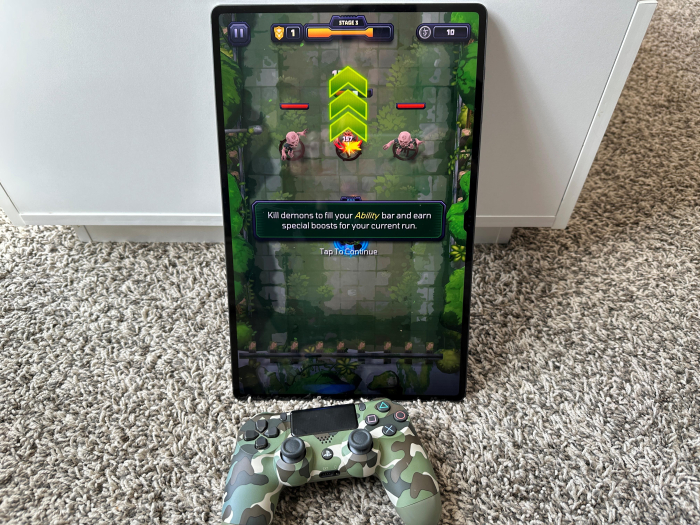
I played this mobile game for an hour on a Friday afternoon as vital research into how controllers work with the device. (Image: BusinessDesk)
Once I saw it, the Tab S9 Ultra offered me a glimpse of a possible future of portable media.
The gaming example is just one, and I have no doubt there will be many people who will see the potential in the device that I have in different ways.
Folk who create digital art would probably love the high performance and incredible screen, for example.
But I think that Samsung has its branding wrong on this one and should rethink how it is framing this device in the market.
Would I buy one?
Probably not.
As impressive as it is, cloud gaming doesn’t really have the range of offerings that I want just yet.
Not to mention that I don’t have the time to play games more than a couple of hours a week, and I am certainly past the halcyon days of going round to my mates to jam Diablo II for hours.
I also don’t really stay anywhere but my home, so have no real need for a big, beautiful screen that I can carry with me to watch things.
Should you buy one?
First, if you have the S8 Ultra, I don’t think you would need to upgrade this round.
But if you are looking for possibly the best and most portable media solution ever made and don’t mind dropping a bit of cash for it, then the Samsung Galaxy Tab S9 Ultra is absolutely what you are looking for.


